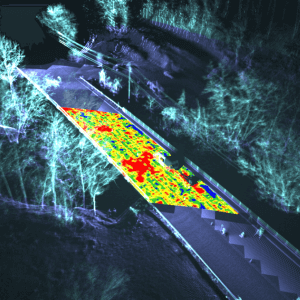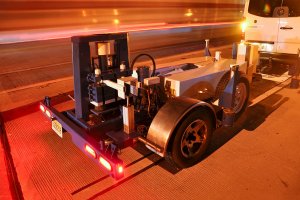
NJ47 over Grassy Sound (Cape May).
Following the RFP for the NJDOT’s 2021-2024 Bridge Resource Program, CAIT has been selected as one of the award recipients and will provide ongoing engineering and research support to the agency’s Division of Bridge Engineering and Infrastructure Management. The BRP is aimed at preserving bridges in the state, enhancing the condition of key transportation infrastructure, and developing new technologies to help engineers build with resilience in mind.
With a team of partners ranging from academia and industry, Rutgers Center for Advanced Infrastructure and Transportation (CAIT) was awarded the New Jersey Department of Transportation (NJDOT) Bridge Resource Program (BRP) for 2021-2024.
Through this program CAIT and its affiliated researchers will help NJDOT strengthen and maintain its bridges and structural assets in a state of good repair while also developing innovative tools and practices that account for resilience and address pressing transportation needs that the Northeast region is facing today.
The research team is led by Dr. Perumalsamy Balaguru, distinguished professor; Dr. Sougata Roy, associate research professor; and Dr. Franklin Moon, professor of civil and environmental engineering; at Rutgers University. The team also includes regional academic partners from Rowan University and New Jersey Institute of Technology (NJIT), and industry partners WSP, GPI, and others.

Pictured is an overlay of bridge lidar data.
“We have assembled a talented team with numerous capabilities and experiences that will help us effectively address the needs of NJDOT and all core objectives of the BRP,” said Dr. Roy, who assembled the project team and coordinated the winning proposal. “Led by Rutgers CAIT, the team possesses a deep understanding of bridge engineering practice and bridge asset management, extensive experience in load capacity assessment, world class technical expertise, institutional knowledge, a proven track record of innovation and technology transfer, unique facilities and equipment, and effective and efficient management approaches that are unmatched.”
Over the course of the four-year project period, NJDOT identified more than 20 tasks that researchers will be addressing — ranging from technology transfer and workforce development activities to the creation of new approaches to infrastructure preservation and asset management.
The research being conducted under the BRP generally falls into three core areas. First, researchers will ensure that NJDOT meets MAP-21 legislation requirements for risk and performance-based asset management. They will evaluate the agency’s program for bridge and structural asset maintenance, rehabilitation, and replacement.
This will include assisting the agency with developing an innovative model for predicting deterioration, developing methodologies for risk-based prioritization of work, and measuring performance through analysis of data and key metrics as required by MAP-21, among other tasks. One ambitious task is to develop a model-based data extraction method for bridge assets from both textual and graphical information leveraging data mining and image recognition techniques and integrating them with visual models of the assets for efficient management.
Another area of research focus is optimizing preservation of the state’s bridge and structural assets within available funds. The research efforts will focus on evaluating complex and non-complex bridges and structural assets within NJDOT inventory to meet continually changing demands and conditions. Through laboratory, field, and computational studies, the team will investigate innovative materials and emerging technologies that can help improve design, construction, maintenance, and repair of bridges in the state in a cost-effective manner.
“When it comes to preserving key infrastructure, today’s asset owners need accurate life-cycle information that considers the issues of ever-changing demands and deferred maintenance,” Dr. Roy said.” The BRP provides us an important opportunity to support NJDOT with innovative research that can help the agency make more informed construction, design, and maintenance decisions.”
Researchers will also be assisting with developing policies and standards for safe and cost-effective preservation of assets, based on the research conducted and new technology and developments throughout the program.

THMPER bridge testing device.
From implementing new quality assurance procedures for construction projects to maintaining and updating guidelines of standards and best practices, the team will assist the agency in making sure research results are used and have real-world impacts.
In addition to these research efforts, the Rutgers CAIT team will utilize its vast domestic and international network and resources — including the Region 2 USDOT University Transportation Center — to provide on-call services to NJDOT, helping them address any unforeseen challenges with ongoing design, construction, and maintenance activities. Researchers will also provide workforce development training courses for NJDOT personnel — helping enhance their capabilities and stay up to date with evolving knowledge.
“With our combined expertise and resources, we have the ability to complement and strengthen NJDOT’s research efforts, helping the agency preserve state bridges and structural assets in a state of good repair,” Dr. Roy said. “We look forward to continuing to collaborate with NJDOT and developing innovations that meet the goals of the BRP and support transportation infrastructure in the region.”

